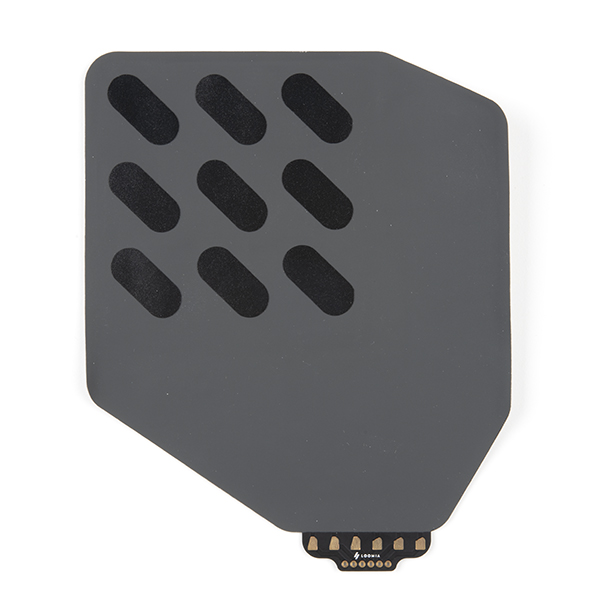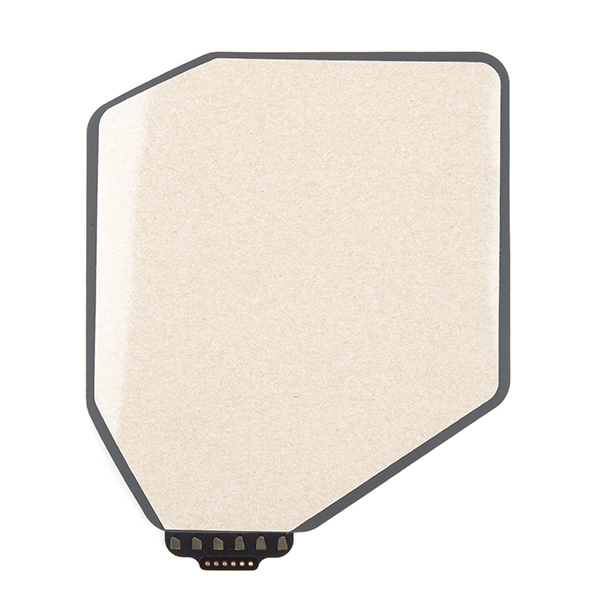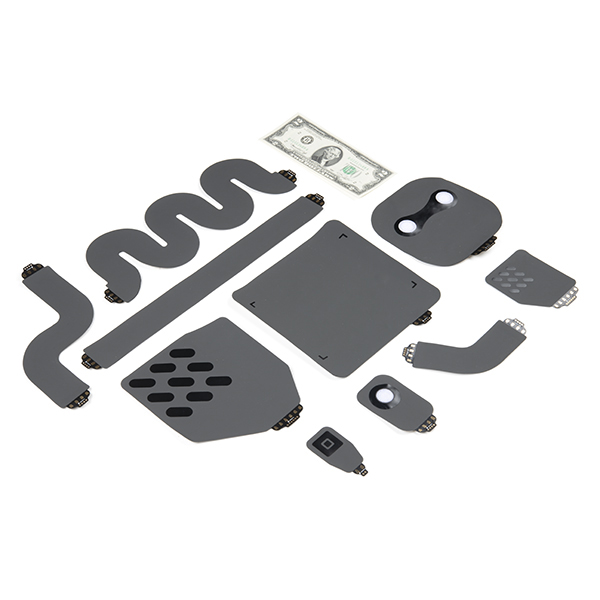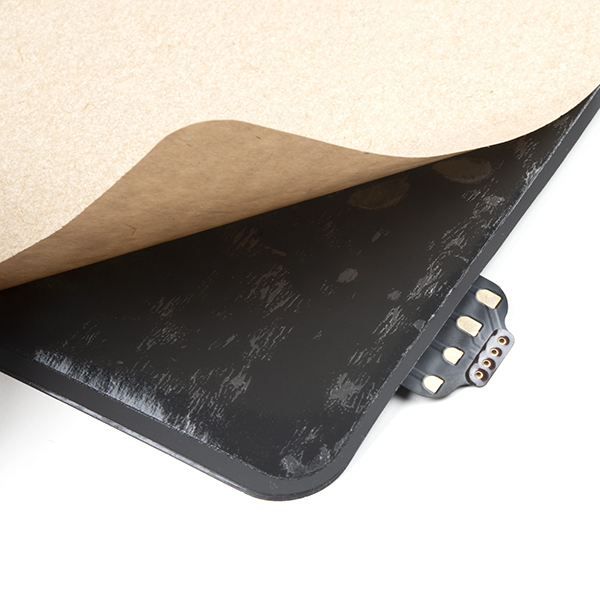Like the Mini Pressure Sensor... but bigger! The Loomia Mega Pressure Matrix has six leads, allowing you to map which point you are at in the 3x3 matrix and get a pressure mapping over a surface. Each area has an analog readout that varies depending on the weight of the item on the pressure sensor. Generally, sensor values will read from 500K Ohms to 100 Ohms depending on the force put onto the sensor.
Loomia parts are designed to be easily soldered together, and work well with popular micro controllers like Arduino Nano and Teensy. The system revolves around Loomia's custom interconnect, which allows for a simple connection between buses. The interconnect can be soldered to headers for easy breadboarding. From fabric to wood, Loomia components can stick onto a range of materials, making your prototypes look clean and polished.
Note: There are a number of operating procedures to be aware of before using Loomia products. This includes directions to not wash or sew any of the parts. Make sure to check the Datasheet in the Documents tab for more information.
- Bend Radius Limitation: N/A
- Thickness: Approx. 20 mils
- Operating Voltage Range: 3.7V - 5V
- Pressure Range: 0.2lbs. - 10lbs.
- Component Dimensions: 5in x 6.5in
- Sensing Area Dimensions: 3in x 3in
Loomia Mega Pressure Matrix Product Help and Resources
Core Skill: Soldering
This skill defines how difficult the soldering is on a particular product. It might be a couple simple solder joints, or require special reflow tools.
Skill Level: Competent - You will encounter surface mount components and basic SMD soldering techniques are required.
See all skill levels
Core Skill: Electrical Prototyping
If it requires power, you need to know how much, what all the pins do, and how to hook it up. You may need to reference datasheets, schematics, and know the ins and outs of electronics.
Skill Level: Rookie - You may be required to know a bit more about the component, such as orientation, or how to hook it up, in addition to power requirements. You will need to understand polarized components.
See all skill levels
Comments
Looking for answers to technical questions?
We welcome your comments and suggestions below. However, if you are looking for solutions to technical questions please see our Technical Assistance page.
Customer Reviews
No reviews yet.





